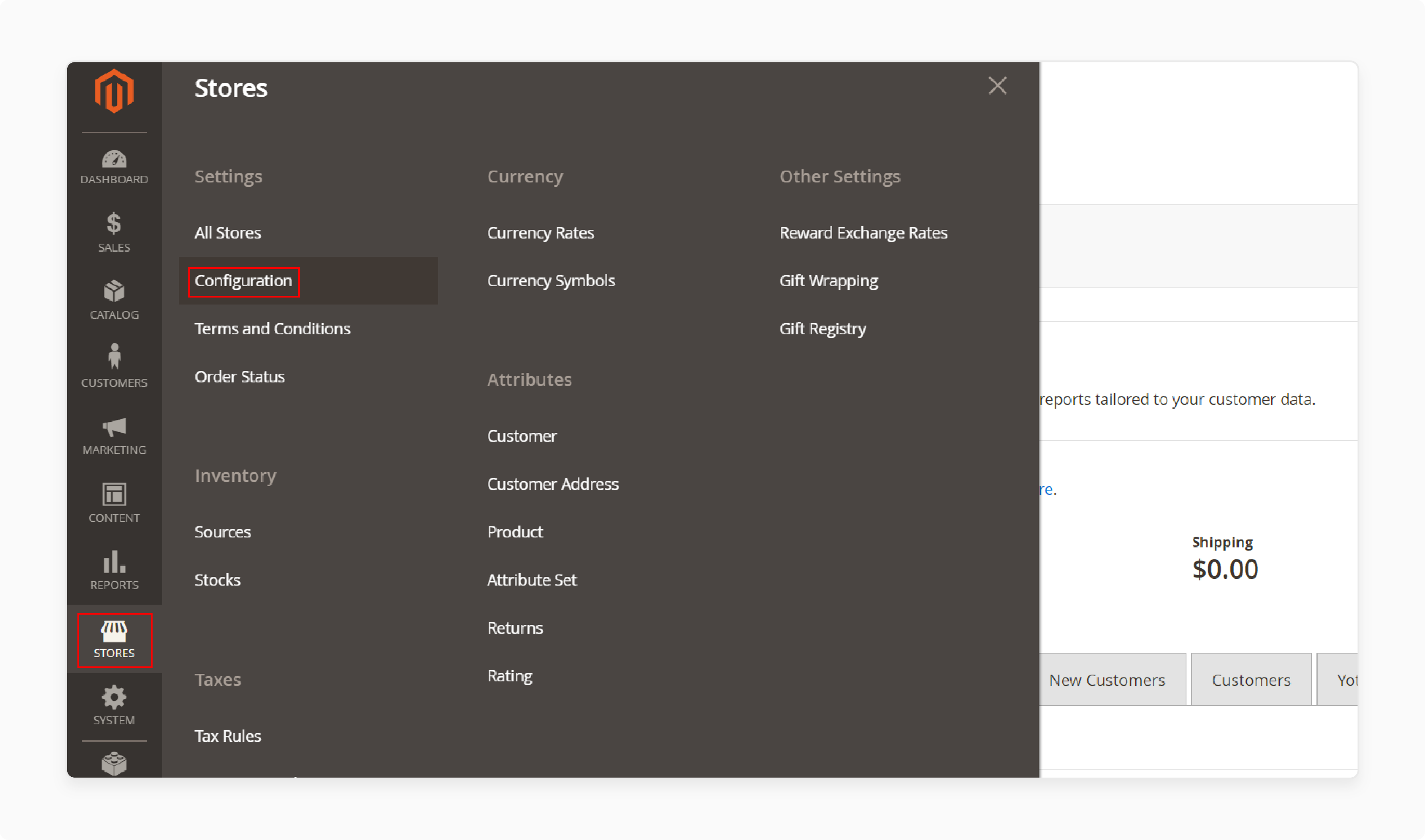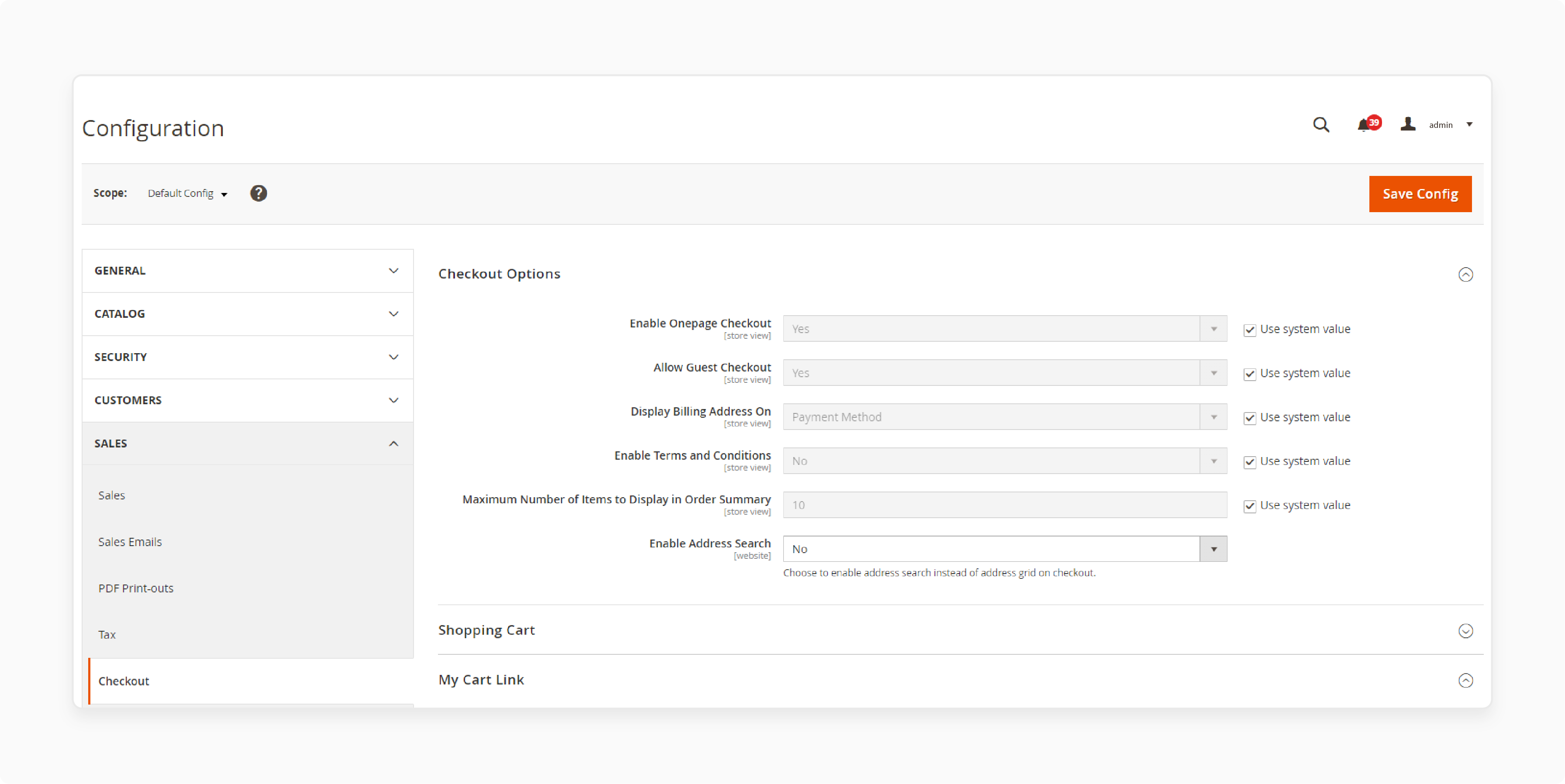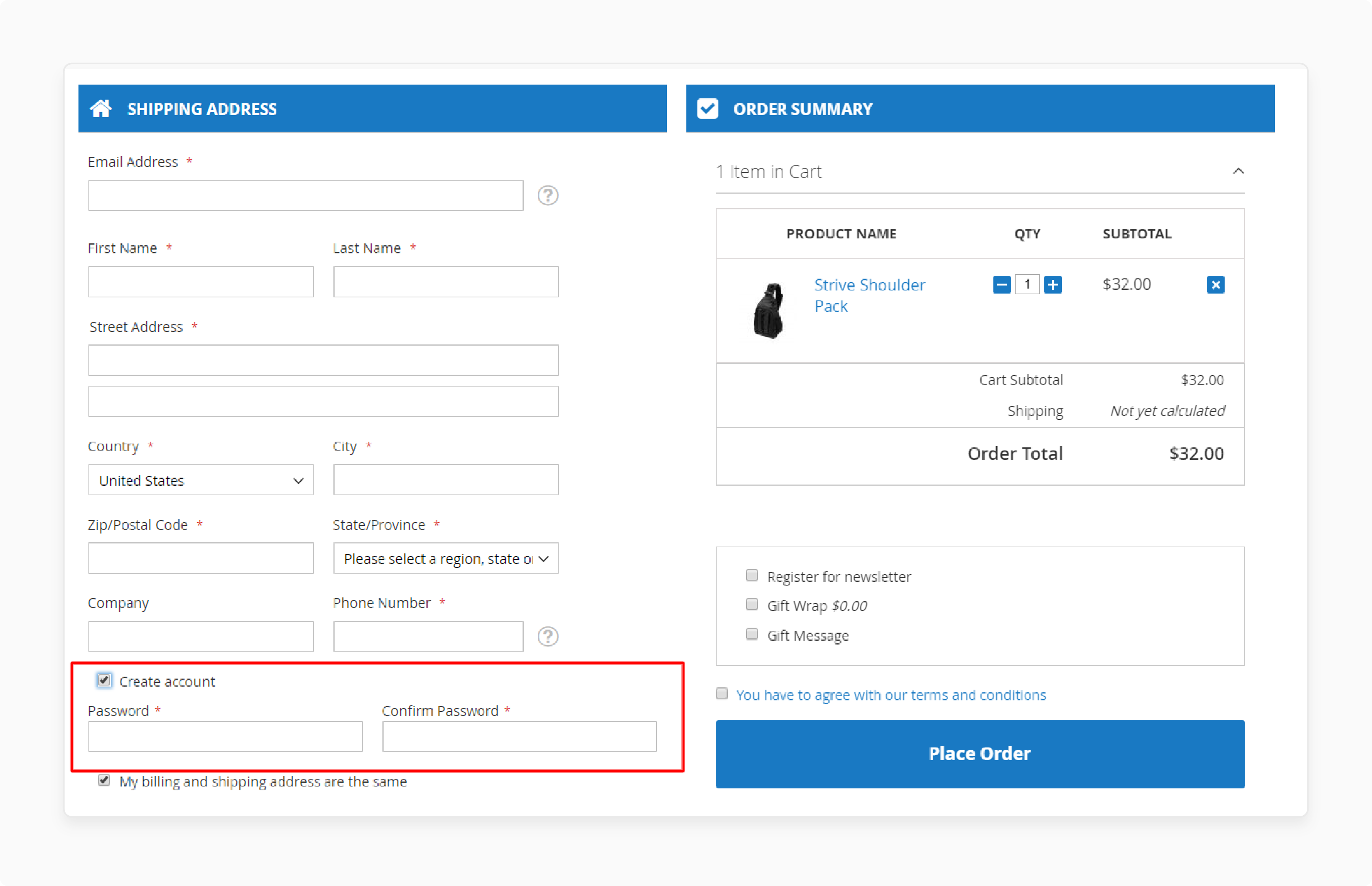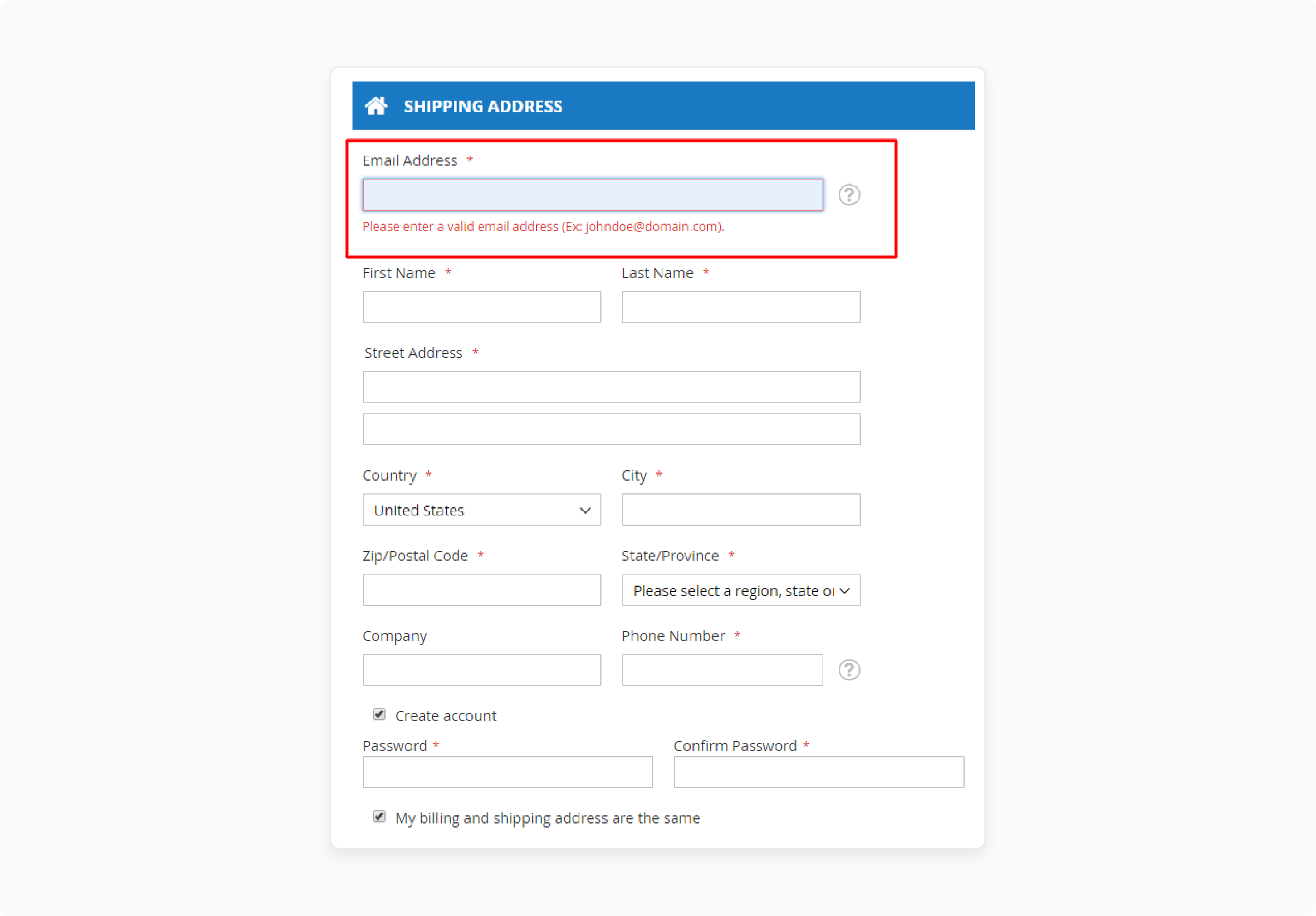
Stop Forced Registration With Magento 2 Disable Guest Checkout
Looking to disable guest checkout in your Magento 2 store? The Magento 2 disable guest checkout encourages users to open an account before making a purchase.
This tutorial will cover how to disable guest checkout in Magento 2.
Key Takeaways
- Access the admin panel and navigate to the checkout options section.
- Use the "allow guest checkout field" to enable or disable this option.
- Steps to disable guest checkout improves customer data collection.
- Tips to increase conversion rates through the Magento 2 admin panel.
- Configure guest checkout settings in a few easy steps.
- Troubleshooting tips to enhance the user experience.
-
Best Practices For Utilizing Magento Guest Checkout For E-Commerce
-
Common Issues With Disabling The Guest Checkout Process Without Creating An Account
What Is Magento 2 Guest Checkout Feature?
Guest checkout enables new customers to complete their purchase without the need to create an account.
The default feature of Magento 2 allows customers to create an account directly on the checkout page. From the customer’s perspective, it simplifies the process. It reduces the steps required to log in or create a new account, allowing for a quicker checkout. It helps protect their information while ensuring a seamless purchasing experience.
Customers can use social login after completing their purchase. It enhances convenience without interrupting the buying process. According to a Baymard Institute report, "24%" of customers abandon their carts. It is due to account creation requirements. Offering guest checkout helps resolve this issue. It speeds up the buying process and improves customer satisfaction.
Why Enable Or Disable Guest Checkout In Magento 2?
1. Security Reasons
By requiring customers to create accounts, you gain more control over personal information. It allows you to protect it better. Accounts add a layer of protection against fraudulent transactions. It is because they track user activity over time. With customer accounts, it's easier to monitor and verify each transaction. It ensures accurate data management.
Requiring accounts for checkout does more than collect basic user information, such as:
- Stores can monitor login locations and flag suspicious activity from unfamiliar IP addresses.
- Flag unusual buying patterns or sudden large purchases from new accounts for review.
- Accounts can enable additional security measures like two-factor authentication. For example, SMS verification or email confirmations for high-value purchases.
2. Customer Data Management
Accounts create a consistent trail of customer interactions. They help you manage marketing, promotions, and customer support more effectively. With user accounts, you can offer personalized product recommendations & a tailored shopping experience. Access to detailed customer information allows you to design more targeted marketing campaigns.
Consider the following to increase engagement:
- Suggest complementary products based on past buys. For example, printer ink for a recently purchased printer.
- Recommend items similar to those frequently viewed but not purchased.
- Use saved items to inform recommendations & alert customers to sales on desired products.
- Segment customers based on purchase history for highly targeted marketing.
3. Customer Experience
Encouraging account creation boosts retention. This is because customers who create accounts are more likely to return. Accounts allow you to offer a more personalized experience. They provide customized recommendations based on past purchases. Requiring an account may frustrate customers who want to make a quick purchase.
Consider the following problem-solving tips:
- Access to full purchase and communication history allows for more efficient problem-solving.
- Analyze common purchase combinations/frequently returned items to inform product improvements/new offerings.
4. Seamless Checkout
Let customers decide whether to create an account. However, incentivize it with discounts or faster future checkouts. Simplify the registration process. Allow customers to create an account with a single click after their purchase. Let them check out as guests. Remember to send an email afterward asking them to create an account for future benefits.
Consider the following practices to allow for proactive retention efforts:
- Track customer spending over time to offer tiered rewards or exclusive benefits to high-value customers.
- Identify patterns in customer behavior that may indicate a risk of losing their business.
What Are The Effects Of Forced Registration?
1. Increased Cart Abandonment
Mandatory registration can discourage customers who prefer quick purchases. When required to provide personal details before checkout, many may abandon their carts. It can mainly occur if they are in a hurry or want a seamless experience. This added step increases the likelihood of customers leaving the website. It raises the cart abandonment rate.
2. Hindered Process
Online shoppers value a smooth and hassle-free experience. Forced registration disrupts the fast and straightforward process they expect. Shoppers want to complete transactions quickly and without obstacles. Businesses should focus on offering a user-friendly shopping experience that meets these expectations.
2 Methods To Disable Magento 2 Guest Checkout
Method 1: Via Backend
- Log in to your Magento Admin Panel.
- From the Admin Panel sidebar, navigate to Stores > Settings > Configuration.

- In the left-hand menu, select SALES > Checkout.
- Expand the 'Checkout Options' section.
Note: If you're configuring for a specific store view, ensure to select the appropriate store view before proceeding.
- Uncheck the "Use system value" checkbox to allow changes to the setting.
- Set 'Allow Guest Checkout' to "No" to disable it.

- Click on the 'Save Config' button to apply your changes.
Method 2: Via Extension
- Download and install any Magento 2 Guest to Customer extension.
- Create an account via email confirmation without additional steps.
- Integrate the checkout and registration process.
- Disable guest checkout.
- Automate or manually convert guests to registered customers to make purchases.
- Automatically link past orders to customers' new accounts.
Note: The Guest Checkout Magento 2 extension ensures you capture valuable customer information. It also simplifies the checkout experience.
Best Practices For Utilizing Magento Guest Checkout For E-Commerce
| Best Practices | Description |
|---|---|
| Understand the Importance of Magento Guest Checkout | Overview of Magento guest checkout and why it matters for e-commerce. |
| Streamline your checkout process | Keep your checkout simple and user-friendly by reducing the number of steps. |
| Offer Multiple Payment Options | Provide various payment methods to cater to customer preferences, ensuring flexibility. |
| Encourage Account Creation Post-Purchase | Offer incentives for creating an account after checkout, highlighting the benefits for customers. |
| Mobile Optimization for Guest Checkout | Ensure your checkout is mobile-friendly, as it significantly impacts sales. |
| Use Email Verification | Implement email validation during guest checkout to ensure accurate information. |
| Monitor and Analyze Checkout Metrics | Track and adjust Magento analytics to finish the checkout process. |
| Provide Guest Checkout Option | Offer guest checkout to reduce checkout time and improve customer experience. |
| Use security seals and badges | Display trust signals and security certifications at checkout to build customer confidence. |
| Enable Social Login | Add social login options to simplify the checkout process and enhance customer experience. |
Frontend Display Of Guest Checkout Option In Magento
When customers decide to make the final purchase, the suggestion for guest checkout is set to appear next to the login option. It displays the two selections for customers to choose from. They will become satisfied if you provide them with a precise layout and variety in checkout.
1. Sign Up on the Checkout Page

The sign-up on the checkout page function will appear first. It appears after the customer ticks in the box of the create account field. All the information customers fill in for checkout will be used to create an account. Customers only have to create a password to protect their account information.
2. Email Validation

Email validation activates without any further configuration. It only allows customers to place an order when the customer fills in the correct email form. The function analyzes the customer information in your system. It recognizes emails from customers who have already created accounts. The system will encourage that particular customer to log in with a URL. It guides to the store's Sign-in page.
3. Checkout Process
Guest checkout simplifies the checkout process. It reduces the number of steps required to complete a purchase. It provides a straightforward and easy-to-use checkout process. Increase your store's overall conversion rates by reducing the rate of cart abandonment. It makes it easier for customers to complete their purchases.
Common Issues With Disabling The Guest Checkout Process Without Creating An Account
| Issue | Description |
|---|---|
| Increase Cart Abandonment | Mandatory registration can frustrate customers who want a quick checkout. It can lead to higher cart abandonment rates. |
| Hinders Streamlined Process | Forced registration interrupts the smooth shopping experience that many online customers prefer. |
| Loss of Sales | Customers leave due to registration requirements, which may cause stores to lose sales. It happens especially to those who prefer not to create accounts. |
| Customer Retention Challenges | Disabling guest checkout might alienate customers. They may favor convenience over account creation. |
| Limited Customer Data Collection | Registration gathers customer data. Some might not complete the form, leading to incomplete data collection. |
FAQs
1. How does disabling or allowing guest checkout in Magento complete the checkout process?
The steps to disable guest checkout in Magento 2 impact the one step checkout process. Customers will not be able to complete the checkout without creating an account. This change applies to all checkout methods, including one checkout step. While this may add an extra step for new customers, it allows you to gather more customer data. If you want to balance convenience & data collection, optimize your account creation process. Make it as smooth as possible within the checkout flow.
2. Can guest visitors create an account applying checkout after I disable "Allow Guest Checkout"?
Uncheck the checkbox in the Allow Guest Checkout box. Notice that it doesn't remove the need to register during the purchase process. Instead, it simply requires them to create an account before completing their order. This approach ensures you capture customer information. It provides a relatively smooth checkout experience.
3. If I disable guest checkout, will customers still have the option to register for an account?
Yes, they'll be able to after you find the checkout options section and disable the ability to checkout as guests. Customers will still have the opportunity to register for an account during checkout. When guest checkout is disabled, instead of seeing a "Checkout as Guest" option, customers will be prompted to create an account before completing their purchase. It allows you to gather more information while still providing a streamlined process. Customers can tab and click through a quick registration form right on the checkout page. It minimizes friction while ensuring you collect valuable customer data.
4. How does disabling the "Allow Guest Checkout" value checkbox affect marketplaces with dozens or hundreds of sellers?
In Magento 2 marketplaces, disabling guest checkout can have significant impacts. Requiring login can protect both buyers and sellers. It may lead some customers to leave their cart abandoned rather than create an account. This effect can be amplified in multi-seller environments. It potentially affects numerous merchants at once. It provides a unified customer experience across all sellers and helps prevent fraud. Try to mitigate potential losses. Implement a streamlined account creation process that doesn't redirect to another page. Keep customers in the checkout flow while still gathering necessary information.
5. How can I encourage customers who are hesitant to share their personal information?
Consider implementing a streamlined process. Allow the customer to generate the customer account directly within the checkout flow. Communicate the benefits of having an account. For example, easier future purchases and order tracking. Offer the option to generate the customer account using minimal information initially. You can then prompt for additional details after the first purchase. It balances the need for customers to log in while respecting their privacy concerns. Implement strong privacy policies and security measures. Make these visible to reassure customers about the safety of their personal information.
6. Why should I enable the option to check guest checkout in Magento 2 after disabling it?
The default setting allows guests to make purchases without an account. You might have previously disabled this feature. However, you may want to enable guest checkout in Magento again for several reasons. Guest checkout can reduce friction in the buying process, potentially increasing conversion rates. This is especially true for first-time customers. They are not yet likely to trust your store with their personal information. Enabling guest checkout doesn't prevent customers from creating an account after they complete their purchase. In fact, you can offer this option post-purchase. It allows customers to save their information & favorite store items for future visits. It balances the ease of guest checkout with the benefits of registered accounts. It leads to both immediate sales and long-term customer relationships.
Summary
Magento 2 disable guest checkout allows businesses to offer a personalized experience. It helps store owners:
- Enhance their Magento 2 store's security and customer data collection.
- Improve customer engagement and manage the store's checkout process effectively.
- Improve customer retention and streamline data collection.
- Improve data management to offer a personalized shopping experience.
- Gather valuable customer information and improve marketing efforts.
- Manage customer data more efficiently.
Modify the checkout process to require customers to create accounts for purchases with Magento hosting services.





